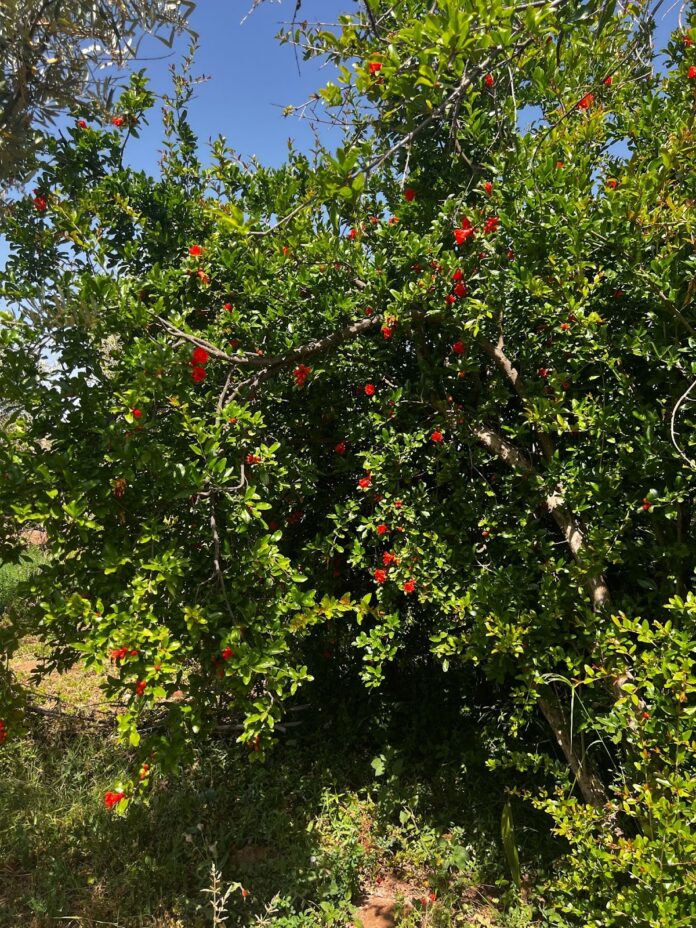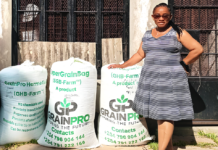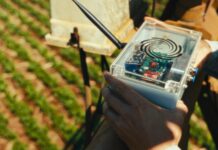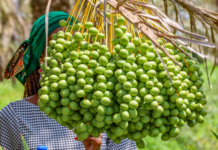By Ansh Jakatimath and Winnie Wang
On one of our first few dates in Morocco, we visited the hillsides of Talit Mamoun with someone who has now become a familiar, friendly face. Abdejalil from the High Atlas Foundation is a native of the area, who knew the native flora and fauna like the back of his hand. He was the link of the operation from the office to the fields. He steered us bright-eyed university students, who were clearly unfamiliar with the intricacies of what an unripe fruit even looked like as we managed to enthusiastically misidentify fig, olive, and carob trees.
We all collectively laughed off what we could hopefully call our American naivete, but one last plant lingered as our opportunity to save face. We kept walking, slowly coming across a cluster of plants, a few low to the ground, its ruby-colored flowering caught in the sunlight. One of us paused. “Is this pomegranate?” they guessed.
Our streak of incorrect answers was finally broken as Abdejalil nodded. Our relief quickly transformed into a holistic lesson that explained the deeper meaning of the fruit– not just as something to eat or sell, but as a symbol carried through centuries of spiritual tradition and communal life. In that moment, it was clear that the pomegranate was more than a crop, but rather a key that could unlock the opportunity to extend its story–one of resilience, opportunity, and shared growth onto the communities that needed it most.
That small moment — basking under the sun, gleefully identifying fruit — unfolded into something far larger. As we listened to Abdejalil speak, it became clear that the pomegranate wasn’t only rooted in soil, but in story: one told across faiths, cultures, and generations.
An interfaith symbol of provision and paradise, the pomegranate in North African and Abrahamic culture has long been regarded with cultural value and communal reverence. For instance, the holy Quran mentions pomegranates on three separate occasions explicitly, associating the vibrant reddish-purple fruits with the notions of blessing and an imagery of what is to be seen upon attaining entry into God’s paradise.
On the other hand, the Torah or the Old Testament goes on to compare the bounty of a pomegranate’s seeds, specifically noted as 613 in count, as directly representative of the 613 mitzvot or commandments in the religiously significant Jewish scripture. For both groups, however distinct or similar they may be, the recognition of the pomegranate’s value is certainly a shared ideal. While it may be the case that the religious texts serve as evidence of this recognizable value, there remains an urgent need to use this spiritual significance as a motive to invest into pomegranate’s future to act as a medium to alter rural poverty in Morocco.
Currently, Morocco produces over 80,000 tons of pomegranates every year, over only 4,000 hectares of land. At prima facie, this may seem standard, but when put into contrast with the world’s biggest pomegranate producers, such as Iran and India the ratio of efficiency becomes very clear. While Indian and Iranian producers use more than 100,000 hectares of land to produce 1 million tons of pomegranates, the Moroccan pattern acts to be evermore impressive and doubly efficient. Culturally speaking, the Moroccan pomegranate is considered a national treasure.
From the fields in the foots of the Atlas Mountains to the bustling road medians along the boulevards in Marrakech, the pomegranate exists everywhere in Morocco dripping its bright color across a landscape of desert sand. Its reputation for its sweet and tender arils are well loved in the fruit juice stalls in the busiest medinas and in the hot fields of rural farmland alike. For all Moroccans it has become inextricably linked to cuisine, commonly serving as a tangy side character in the famous Moroccan tagine, creating a flavorful symphony along the notes of lemons, dates, meats, and broths.
This effect and meaning is not isolated to Morocco as on a global scale, as pomegranates and its resulting products are coveted far and wide. They are known to be chock-full of nutrients and the benefits to human health and wellness associated with their consumption and usage. Pomegranates are distinguished amongst the class of superfruits for being exceptionally high in antioxidants, making them anti-inflammatory and anti-bacterial, unlocking a wide range of use cases in cosmetics, food & beverages, and pharmaceuticals.
For Moroccan farmers, the pomegranate is a story of culture and resilience, deeply intertwined in their food, customs, and daily livelihoods. Amongst the effects of global warming in North Africa, the increasing droughts in the semi-desert regions of Morocco mean that the fruit is even more valuable as a drought resistant crop. For them, the pomegranate not only represents a commodity that can be converted into cash, but something much larger on a systemic level – a tool that can alleviate poverty intergenerationally.
Rural poverty on a global scale remains to be unchecked en masse, in Morocco, however, there exist numerous opportunities of combatting this phenomenon. An investment into the profitable generation of pomegranate products is one of these critical avenues towards enacting systematic change.
Today, the potential for the pomegranate’s future is in the hands of individuals who not only recognize, but more importantly, act on this crucial value. Magnifying this lens onto the town of Beni Mellal, which sits in the heart of northern Morocco at the foothills of Jbel Tassemit, while producing two-thirds of Morocco’s annual pomegranate production sheds light on a prospective platform for this action. A region ripe with growing conditions suitable for the pomegranate, a track record of reliable harvest volumes, and logistically significant brief transit duration to consumers in Europe, Beni Mellal is a model of a region prime for investment with guaranteed growth potential.
The High Atlas Foundation, in partnership with the Oulad Abdellah Cooperative—responsible for 15% of Morocco’s national pomegranate production—has taken initiative to reimagine the fruit’s future in the Beni Mellal region. Backed by the Ministry of Agriculture, their efforts align local expertise with ideal growing conditions to build a sustainable foundation for growth.
By merely increasing the quantity of raw pomegranates sold only scratches the surface of the story for the future of pomegranates that can be written. By investing in value-added production—juices, peel powders, concentrates, seed oils—this partnership envisions a model that transforms a beloved fruit into a driver of systemic, community-led development. With the right support, this initiative can serve as a blueprint for rural resilience far beyond the orchard.
For Moroccans of the past and the present, the pomegranate has always promised paradise and bounty. As we move into the future, there is an urgent need for investment that will guarantee and optimize its impact for tomorrow and the generations to come.
Ansh Jakatimath and Winnie Wang are seniors at the University of Pennsylvania. Over the past year, they have led a team that has served as interns with the High Atlas Foundation through Penn International Impact Consulting.








